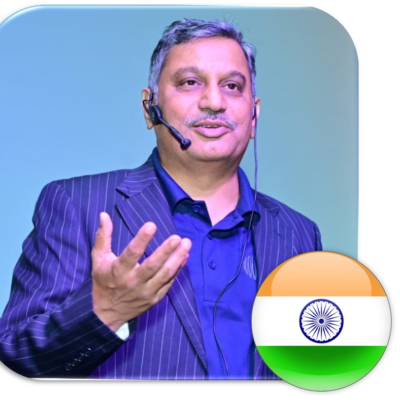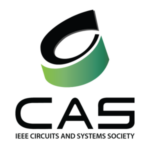KEYNOTES SPEAKERS
On updating
DIGITAL TREND FOR CLEAN AND ELECTRIC MOBILITY
Supported by:

As the world accelerates towards a sustainable future, electrical mobility stands at the forefront of transportation revolutions. In this dynamic keynote, we delve into the digital trends that are propelling electric vehicles to new heights. The fusion of deep learning and the Internet of Things (IoT) has paved the way for groundbreaking advancements in electric mobility. From intelligent energy management systems to autonomous driving capabilities, the convergence of these cutting-edge technologies is reshaping the way we envision transportation.
Join us on this electrifying journey as we explore the seamless integration of deep learning algorithms, empowering electric vehicles with enhanced efficiency, safety, and adaptability. Discover how the IoT enables real-time data exchange, optimizing charging infrastructure and providing users with an unparalleled driving experience. As we embrace the digital transformation in electrical mobility, we also address the challenges and potential solutions that lie ahead, paving the road towards a greener, smarter, and more interconnected transportation ecosystem.
MBA. Ravikiram Annaswamy

Ravikiran Annaswamy is Founder and CEO of Numocity Technologies. He is incubating various innovative products using analytics and deep learning. His has been business focus is on bringing Electric Mobility to Indian market and has launched various technology products like Fulcharge.com in this space.
He works closely with global programs likeFounders Institute (Fi.Co) and Unreasonable Institute as Mentor and Coach for early stage startups. He is on the global team of IEEE 5G and is responsible for vision & strategy for future applications and services like Tactile/Haptic Internet, IOT, AR, VR Applications.
He has over 23 years of business experience as Entrepreneur and as Business Leader at Nokia Siemens Networks and Siemens AG. He was Business Head for Indian market, led Global Product Management and was General Manager for BSS Solutions. He championed Intrapreneurship by working as Innovation head for Bangalore site of Nokia Siemens Networks.
IOT TO THE RESCUE:
HOW TO FEED A GROWING POPULATION WHILE CONSERVING THE PLANET’S RESOURCES
Supported by

World population is growing and according to FAO (United Nations Food and Agriculture Organization) the agriculture production should increase by 70% by 2050. On the other hand it is also well known that the agricul- ture is dramatically impacting the 9 planetary boundaries defined by Johan Rockström and his group in 2009. So we are facing a big dilemma, how to improve the productivity of the soil without impacting the planet and its limits.
The growth of crops depend on several parameters such as soil moisture, soil temperature, nutrients (fertilizers), soil pH, soil salinity, etc. Without having an on line measurement (real time) of those parameters we will probably be able to get products from the ground, however we are not taking in account what are the impact of what we are doing and the way we are making agriculture. With the appropriate sensors and IoT we are able not only to know the level of the parameters already mentioned but also to act based on the results.
This talk will present an IoT approach to measure relevant parameters for crop growth and health while keeping the planet safe. It will also cover the need and design of edge computing for this kind of IoT application.
Dr. Victor Grimblatt

Victor Grimblatt has an engineering diploma in microelectronics from Institut Nationale Polytechnique de Grenoble (INPG – France) and an electronic engineering diploma from Universidad Tecnica Federico Santa Maria (Chile). He got his PhD on Electronics in 2021 from University of Bordeaux. He is currently R&D Group Director and General Manager of Synopsys Chile. He has expertise and knowledge in business and technology and understands very well the trends of the electronic industry; therefore, he is often consulted for new technological business development.
He has published several papers in IoT, EDA and embedded systems development, and since 2007 he has been invited to several international conferences to talk about Circuit Design, EDA, IoT, and Embedded Systems. Since 2012 he is chair of the IEEE Chilean chapter of the CASS. He was President of the Chilean Electronic and Electrical Industry Association (AIE) from 2017 to 2021. He has been part of several conferences TCP (ISCAS, ICECS, LASCAS). He is member of the IEEE CAS Board of Governors for the period 2021 – 2022. He chairs the Electronics for Agrifood SIG at CAS. He was Chair of LASCAS Steering Committee from 2018 to 2022. Victor’s research areas are EDA (Electronic Design Automation), and Smart Agriculture applying Machine Learning, Artificial Intelligence, and IoT.
TECHNICAL ASPECTS IN THE ENERGY TRANSITION: TOWARDS A SUSTAINABLE FUTURE
In this keynote, we examine the essential technical aspects driving the energy transition towards a sustainable future. The focus will be on the decarbonization of thermal power plants, highlighting innovative technologies such as carbon capture and storage (CCS) to reduce their carbon footprint. Additionally, we will explore the integration of renewable energies in these plants to achieve cleaner and eco-friendly power generation. The presentation will address the technical challenges and opportunities that arise in this transition, emphasizing the need for collaboration across sectors to achieve a more sustainable and environmentally friendly energy future.
Mg. Andrés Yabrudy

Electrical engineer with a Master’s in Business Administration (MBA) and studies in mechanical engineering and finance, among others. With 30 years of experience in the energy sector, specializing in areas such as electrical systems planning, power plant operation, energy regulation and economics, energy and fuel markets, generation projects, mining project development, renewable energy sources, and business management.
Engaged in academia, serving as a keynote speaker at specialized national and international energy and fuel events and authoring various publications.
Has held different executive positions in the electrical sector.
In recent years, has led the structuring, construction, and commissioning of the 437 MW GECELCA 3 power plant, involving an investment of $680 million dollars, as well as overseeing the coal mining project Las Palmeras, which commenced operations this year.
INTEGRATION OF RENEWABLES AND NEW ENERGY MARKETS
Energy transition is the current aspect that drives the expansion of world electrical matrix. This can be addressed in two ways: i) deployment of renewable energy sources and, ii) use of new technologies (like CCUS, for example). Renewable energy, most from solar photovoltaics (pv) and wind are invertor-based sources, which means that these sources do not have inertia, unlike traditional sources that use synchronous machines, and in which energy markets have been consolidated until today. So, this situation brings a operational challenge to Systems Operators (TSOs) worldwide: it is becoming more difficult to keep the balance between supply and consumption. To address this situation, energy markets are adopting mechanisms in which this situation can be optimized, allowing corrective actions (when need) by TSOs. The objective of this talk is to present international experience and state of the art in how energy market models are addressing this operational challenge, optimizing the renewable sources´ integration into the electrical system and granting the flexibility and resilience that this brave new era on electrical power system demands.
Mg. Jovanio Santos

Experience in designing and installing energy systems and public utility networks (water and compressed air) in construction shipyards. I also have experience in telecommunications systems, design, and installation. MBA in Project Management from the Getulio Vargas Foundation (FGV), and a postgraduate degree in Energy Efficiency from the Lutheran University of Brazil (ULBRA). Published several articles, both nationally and internationally, at conferences organized by the International Institute of Electrical and Electronics Engineers (IEEE), related to Electric Power Systems (EPS), transmission line sizing, simulation, and measurement of electromagnetic fields. I am part of the article review committee of this same organization. Member of the Project Management Institute (PMI) and certified as a Project Management Professional (PMP). Experience in developing value analysis and budgeting for mechanical operation in construction projects and designing maintenance teams.
DIGITAL TRENDS FOR THE DIAGNOSIS OF COGNITIVE IMPAIRMENT PATHOLOGIES.
Parkinson’s disease (PD) is the second most prevalent neurodegenerative disease worldwide, after Alzheimer’s disease (AD). It is estimated that the number of people living with this disease will double between 2015 and 2040, from 6.2 million to 14.2 million patients. The pathological aging processes produced by any of the neurodegenerative diseases increase the risk potential to present falls, these being the main cause of fatal and non-fatal injuries in the elderly. Patients with PD, depending on the stage, clinical subtype and the time of evolution of the disease, can suffer different types of complications, directly related to motor and non-motor complications and others related to the compromise of some systems such as the cardiovascular, autonomic and cognitive changes. These conditions increase the risk of falls, systemic complications, and hospitalizations. The spectrum of complications derived from falls varies from small injuries to complex fractures, head trauma with or without intracranial hematomas with high direct and indirect costs derived from health care, as well as loss of functionality for patients with additional costs for systems and families.
The use of technologies applied to health from telemedicine systems, such as the use of objective technological measurements using mobile apps, as well as the use of depth cameras, accelerometers or inertial units for the objective characterization of gait have allowed a complementary characterization to conventional medical care using low-cost devices even in areas of difficult access. This keynote describes the advances in the development of portable gait analysis systems and signal processing algorithms for the analysis and monitoring of the most important gait variables, both at the ankle and wrist level, as well as applications that support the analysis of cognitive impairment and patient monitoring. The system described makes it possible to extract important variables such as the coefficient of asymmetry (ASA), which is an early indicator of PD, and aims to help estimate the risk of falls in patients with PD and AD. The system is based on the use of low-cost depth cameras, such as Microsoft Kinect, Orbbec Astra, or Intel Realsense, and signal processing algorithms based on wavelet transform, peak analysis, and Machine Learning techniques. The system has been validated over four (4) years with nearly 180 patients and 80 controls at Fundación Valle del Lili and in brigades in different cities of Colombia.
Dr. Andres Navarro

Andres Navarro is an Electronic Engineer, with a Master on Technology Management, both from Universidad Pontificia Bolivariana in Medellín. Obtained his PhD in Telecommunications from Universitat Politécnica de Valencia. He is IEEE Senior Member, advisor of the Spectrum Management Committee for Colombian Spectrum Agency and ITU expert. Currently is the IEEE Comsoc Colombia Chapter Chair. As ITU expert, advised different governments in Digital TV and Spectrum Management. Is a participant on COST Action CA15104 IRACON and former actions COST IC1004 and COST 2100.
He is member of IEICE and EurAAP. Participated in the design of Icesi Master program in Telecommunications and Informatics, as well as in the CDIO curriculum design process and ABET process in the engineering school. Currently is the coordinator of the PhD program on engineering. He is Director of the i2t research group at Universidad ICESI. His research interests are Spectrum Management, mobile radio planning, radio propagation and m-health.
In academia, he has been lecturer and currently a full professor in Universidad Icesi, combining teaching and research activities. He has served as TPC member of different IEEE conferences like PIMRC, VTC, Latincom and FIE. TPC member and Board member of IEEE Colcom since the first version in 2009 as well as chairman of IEEE Colcom in three occasions and TPC chair of IEEE Healthcom 2019. He is also a member of the Head Committee of the International Center “Global Innovation Exchange on Virtual Reality and Visualization” to America and Asia.
AGROTECH: PAST, PRESENT AND FUTURE
The keynote begins with a brief introduction on the importance of technology in agriculture and how it has evolved over time. This is followed by a historical contextualization of agriculture and its relationship with technology, as well as a description of the limitations and challenges that farmers faced in the past. To address the present, various techniques are discussed, including precision agriculture, which provides a detailed explanation of how it has revolutionized crop management. It covers the use of sensor networks and advanced technologies to collect real-time data on soil conditions, climate, and other relevant factors. The analysis of this data provides accurate information on crop needs, leading to increased production efficiency, cost reduction, and minimized environmental impact. The keynote also explores intelligent monitoring, explaining how it enhances crop supervision and control. It involves the use of technologies such as the Internet of Things (IoT) to obtain real-time information on crop status, enabling early detection of issues like diseases or pests and allowing for prompt and precise actions to minimize damage and ensure crop health.
Regarding the future, emerging trends in AgTech are examined, including the impact of artificial intelligence and machine learning applied to agriculture, the integration of drones and robotics in farm management, the application of blockchain for traceability and food safety, and the development of vertical farming and urban agriculture systems.
The presentation is expected to include case studies that exemplify the concepts discussed, such as soil nutrition monitoring systems, monitoring of climate variables, and production counting in various crops using IoT. The conclusion summarizes the presented technological advancements and their impact on agriculture, reflecting on the potential of AgTech to improve efficiency, sustainability, and productivity in farming.
Dra. Monica Huerta

Mónica Karel Huerta holds a Ph.D. degree in Telematics Engineering, which she obtained in 2006 from the Polytechnic University of Catalonia (UPC) in Barcelona, Spain, with the distinction of Sobresaliente Cum Laude. Prior to that, she received a Master’s degree in Biomedical Engineering in 1999 and a degree in Electronic Engineering in 1994, both from Simón Bolívar University (USB) in Caracas, Venezuela. She completed two postdoctoral research stays between 2008 and 2010, one at Universidad Veracruzana in Xalapa, Mexico, and the other at UPC.
Throughout her career, Mónica has held various esteemed positions. At USB, she served as a Full Professor, Dean of Postgraduate Studies, and Coordinator of the Ph.D. program in Engineering, as well as the specialization in Telematics Engineering. She also worked as a researcher at the University of the Armed Forces – ESPE in Latacunga, Ecuador, from 2013 to 2014, and at the Salesian Polytechnic University (UPS) in Cuenca, Ecuador, from 2014 to 2017, under the PROMETEO program of SENESCYT, Ecuador. Currently, she holds the position of Principal (Full Professor) at UPS.
Mónica is a Senior Member of the Institute of Electrical and Electronics Engineers (IEEE) and a member of several IEEE Societies, including Communications, Engineering in Medicine and Biology (EMBS), Technology and Engineering Management, Electron Devices, and Antennas and Propagation. She has actively contributed to the IEEE community, serving as the Chair of IEEE EMBS Ecuador from 2017 to 2018, Chair of Membership of the IEEE Ecuador Section from 2018 to 2019, Vice President of the IEEE Section Ecuador from 2020 to 2021, and currently as the President of the IEEE Ecuador Section for the period 2022-2023.
Mónica’s research interests lie in the areas of Internet of Things, Wireless Networks, Sensor Networks, Telemedicine, and Remote Monitoring. She has an extensive research portfolio, having directed and participated in over 27 research projects. Additionally, she has published more than 180 articles in national and international journals and conferences, showcasing her contributions to the field.
Data Science for Cybersecurity: An Overview Focused on Networking
Supported by:

This overview provides insight into the application of Data Science in the realm of cybersecurity, with a specific emphasis on networking. The increasing complexity and volume of network data have prompted the integration of Data Science techniques to enhance threat detection, prevention, and response mechanisms. By analyzing network traffic patterns, anomalies, and behavioral trends, Data Science plays a pivotal role in identifying and mitigating cyber threats. This paper explores the synergy between Data Science and cybersecurity within the networking domain, highlighting key concepts, methodologies, challenges, and potential future developments. It aims to provide a comprehensive understanding of the evolving landscape of Data Science for cybersecurity in the context of networking.
Michelle Nogueira



